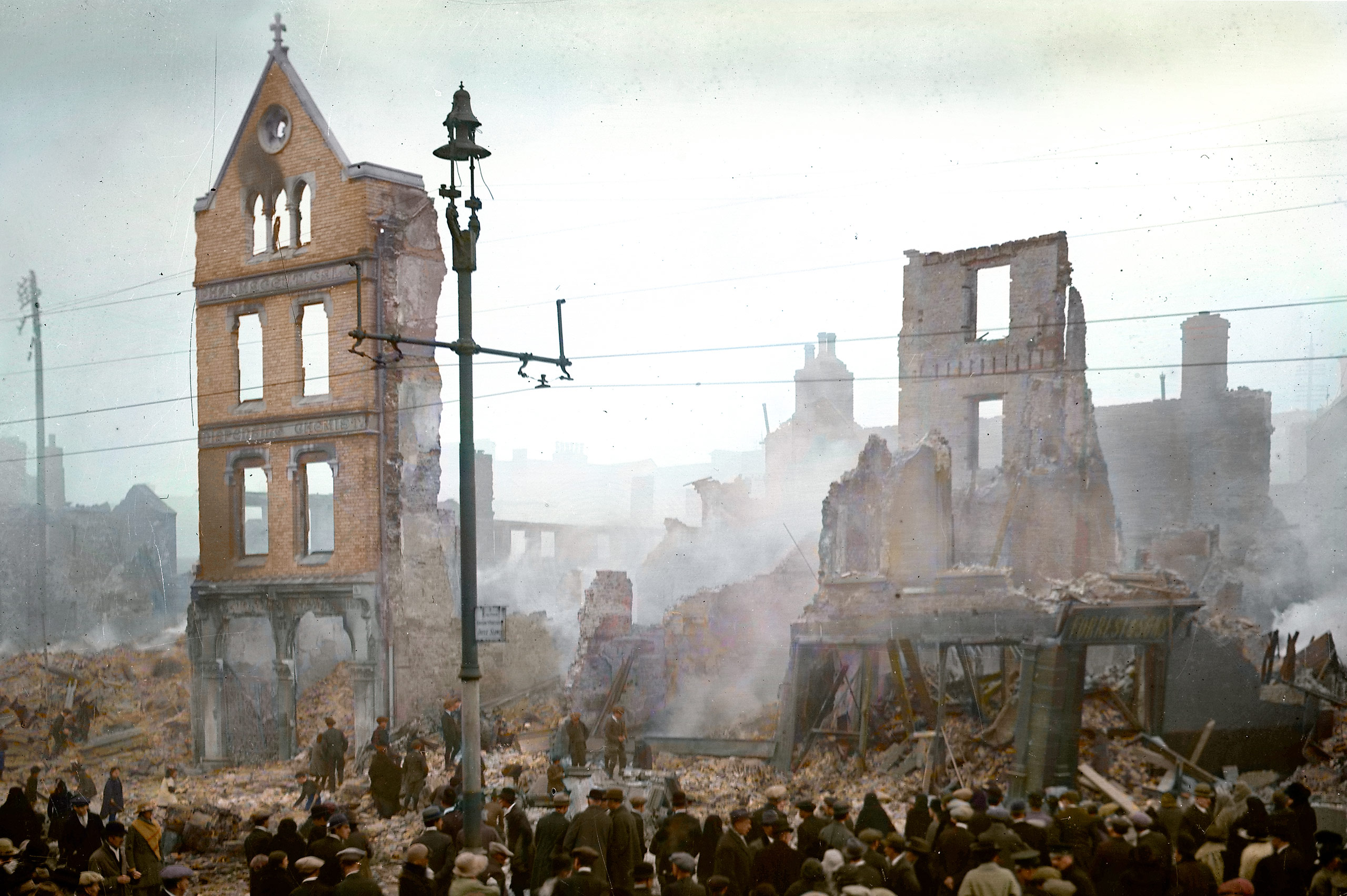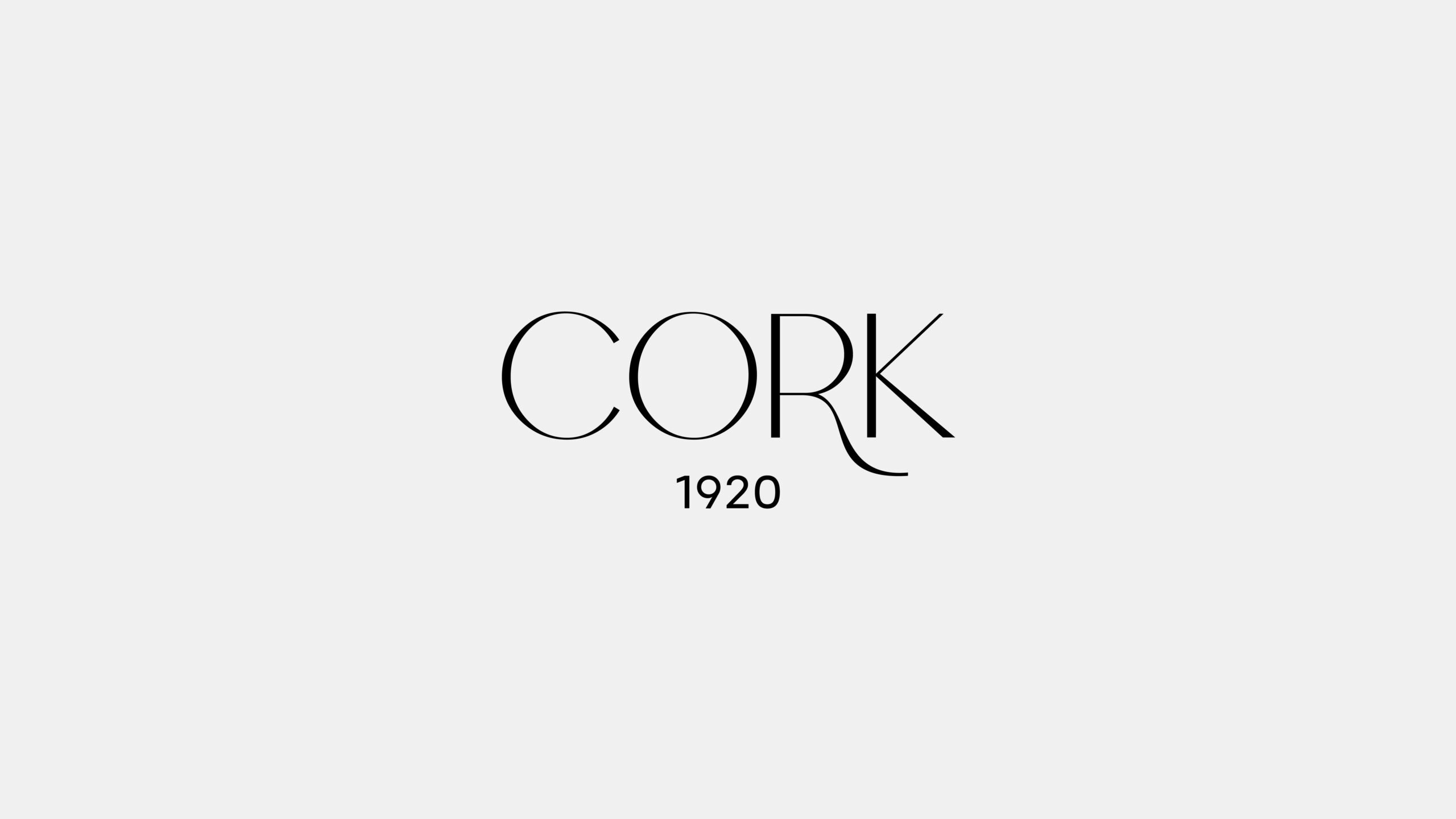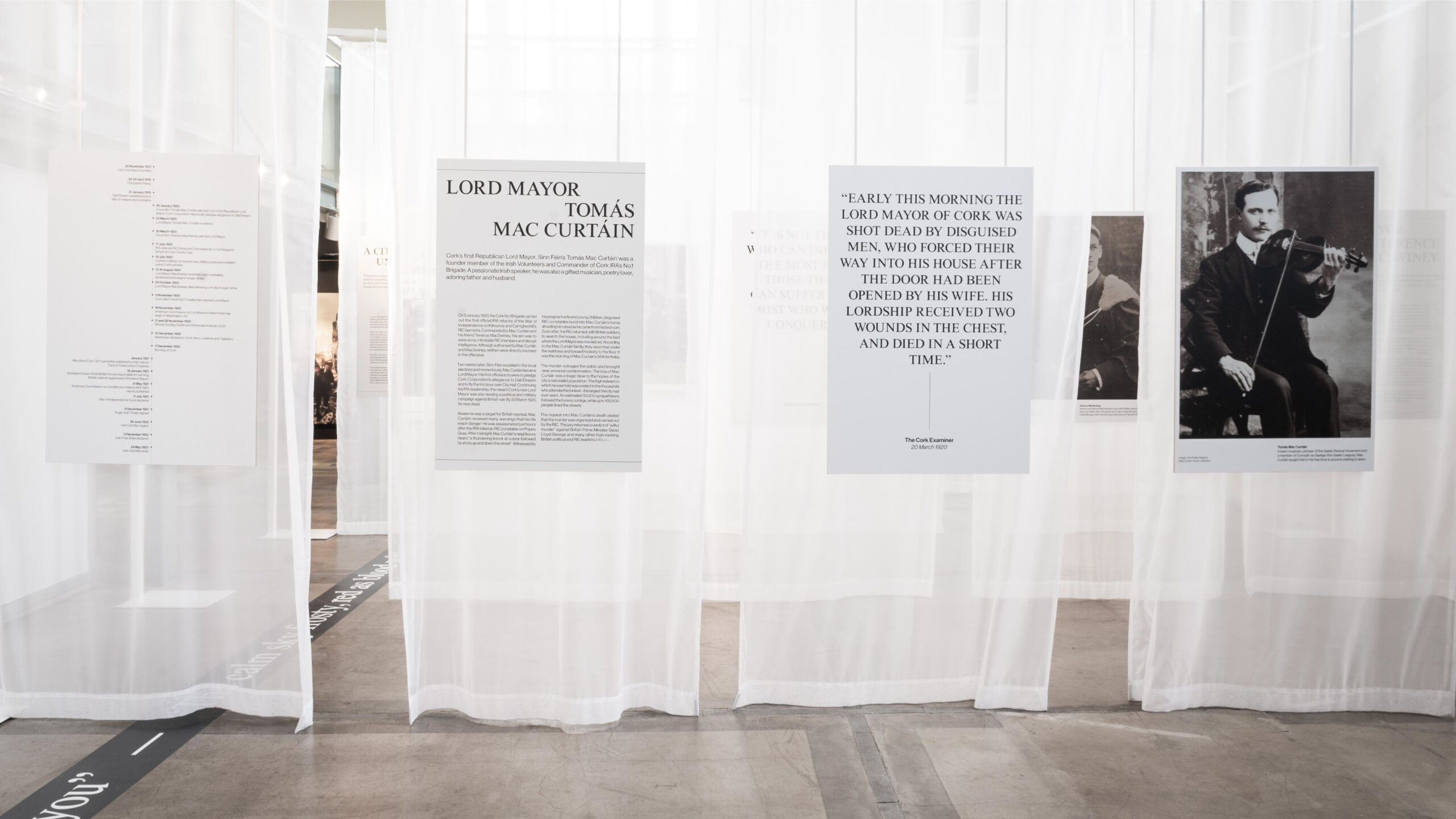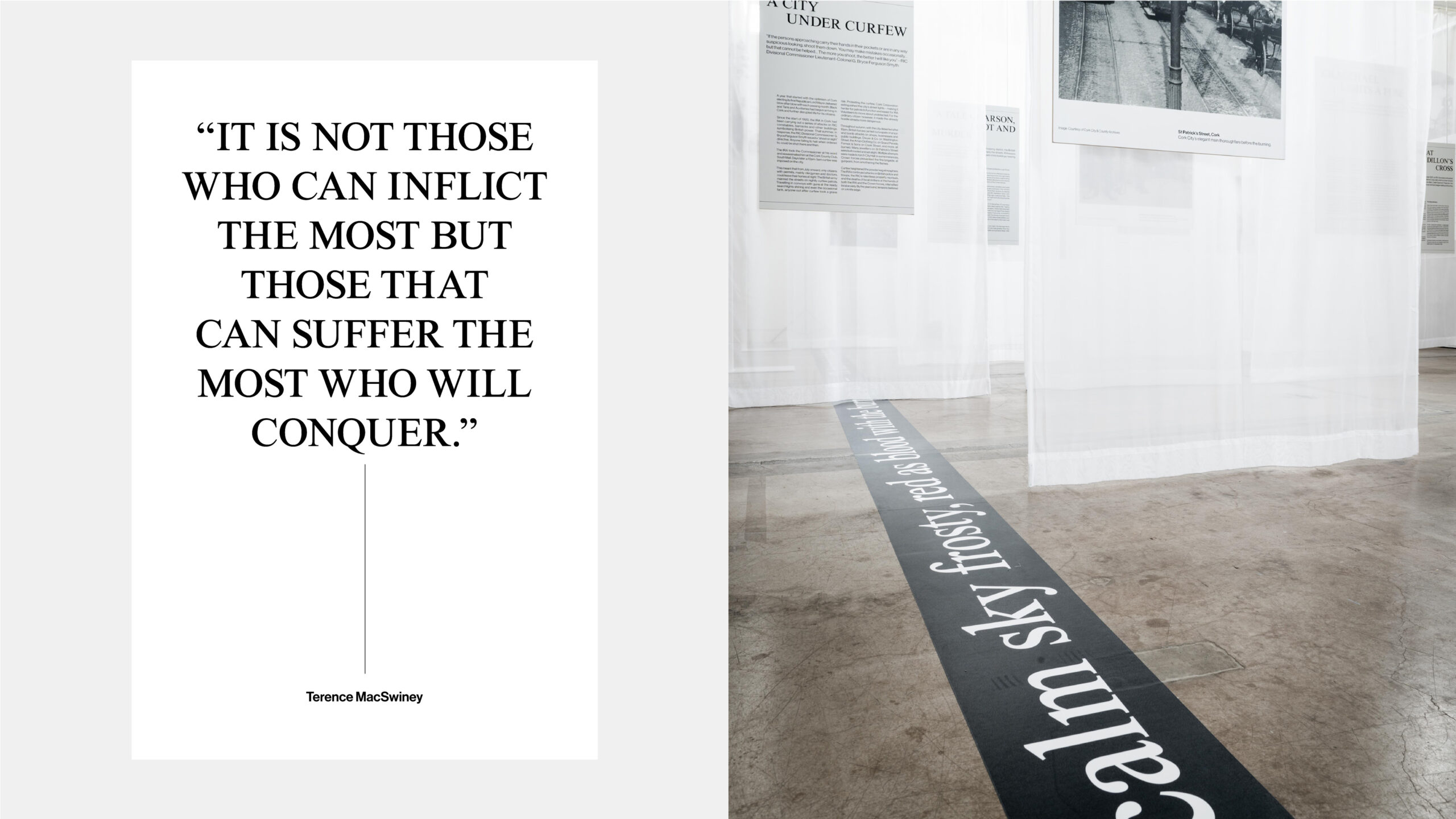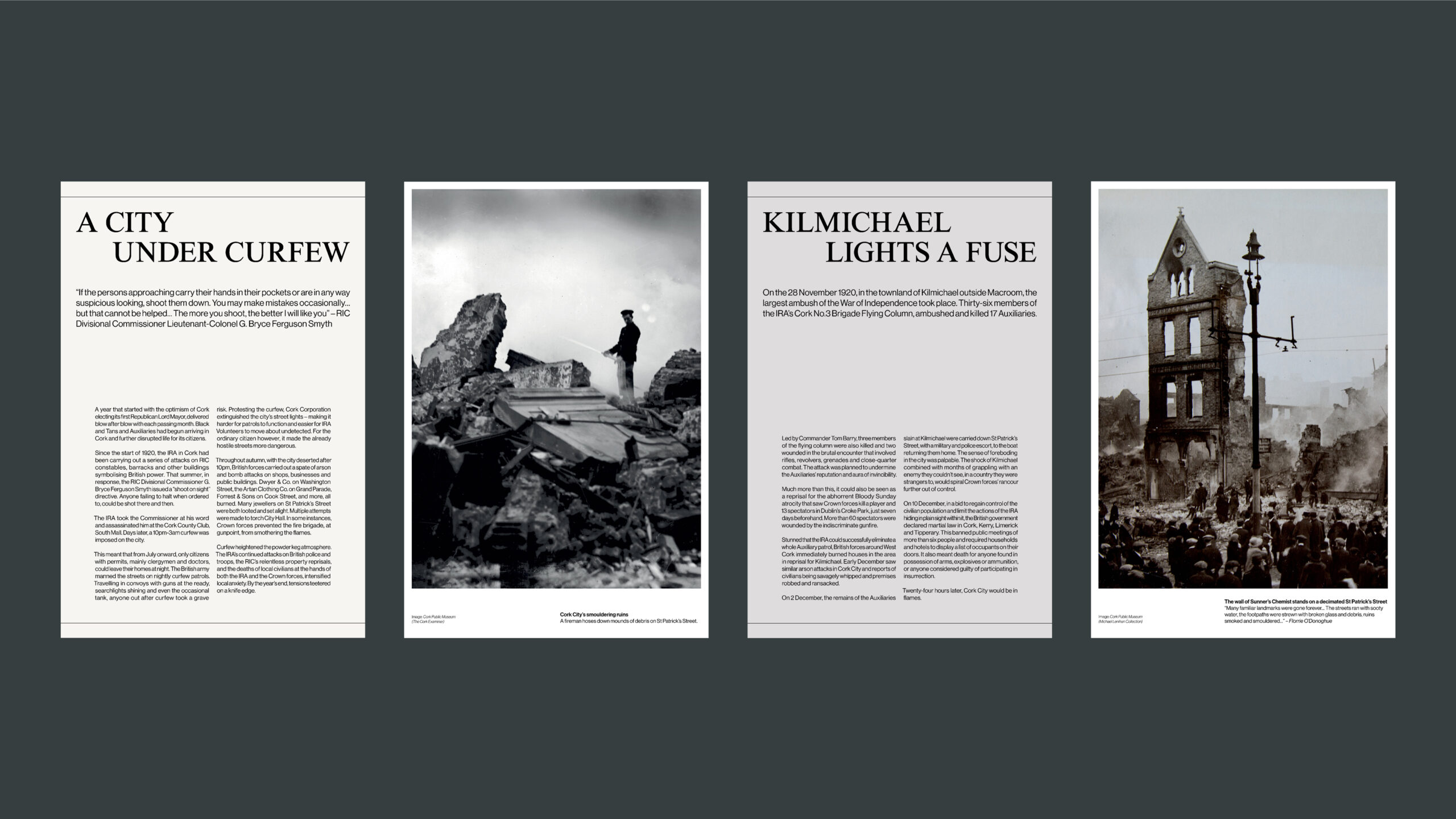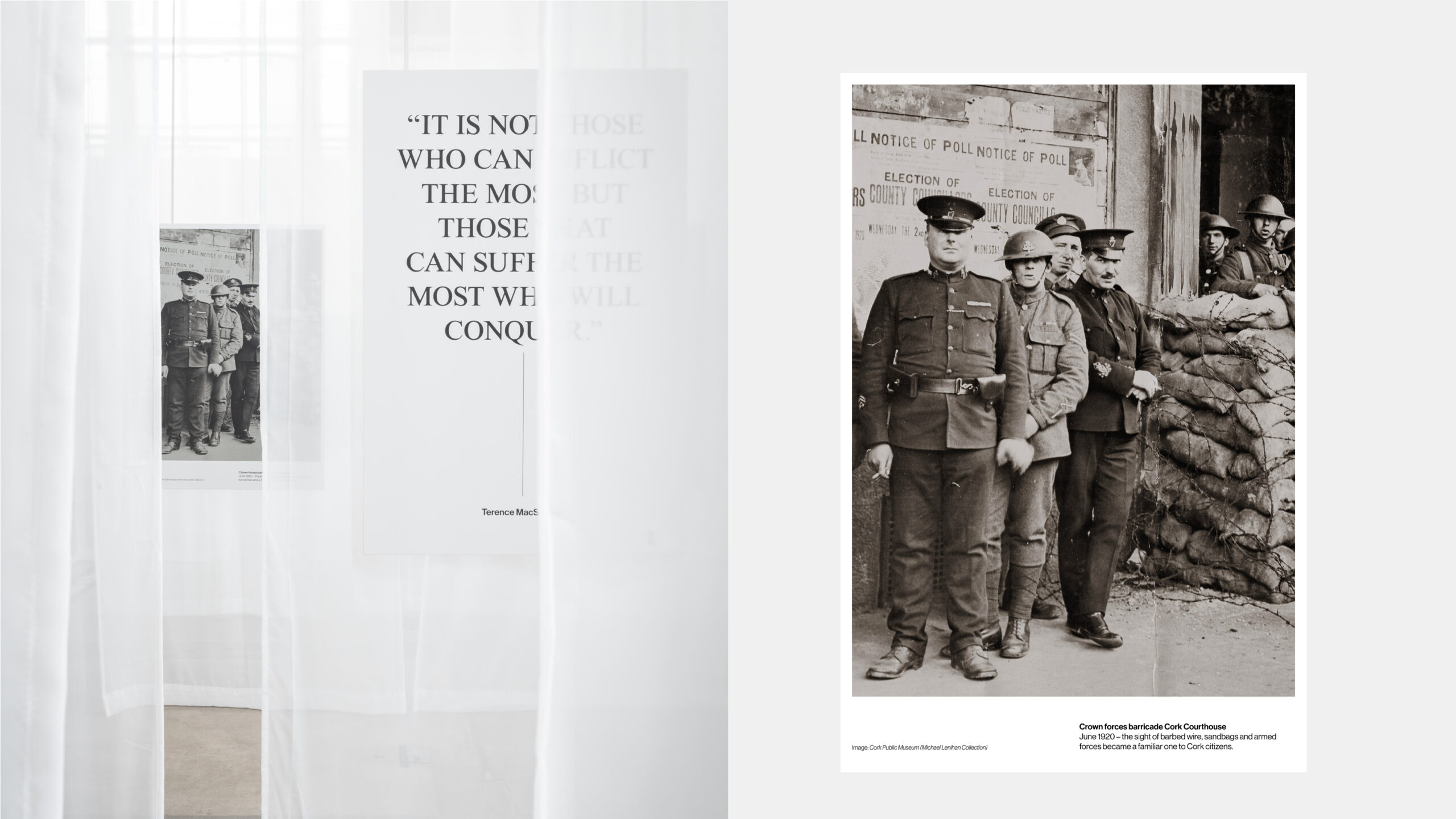Cork 1920: The Burning of a City
Designed by Eleonora Bigi at bigO
Research and Copywriting: Sarah Folan
Project Manager: Ricky Harris
Video Production: Jane Lawrenson
Video Production: Miriam Fayne
Editing: Darren Bolger
Audio Mixing: Ian Lamont
Graphic FX: Anthony Murphy
Exhibition Construction: Gerry Deegan & SystemPlus Elements
Categories: Exhibition / Experience
Industry: Cultural
Tags: Photography / Art direction / History / Storytelling
Website: stpeterscork.ie/
The exhibition Cork 1920: The Burning of a City kicked off a landmark centenary year for Cork City and its role in the War of Independence. Hung in the historic St Peter’s church in the centre of the city, the exhibition uncovered thought-provoking stories, archival material and compelling witness testimony to this remarkable chapter in Cork City’s history, which saw two Lord Mayors die tragically, the imposition of martial law and the the British Crown forces’ image of invincibility wane.
The tension-filled year of 1920 came to a head with the devastating arson attack on 11 December as British Auxiliaries set fires around the city, destroying lives, homes and businesses. The burning of Cork is considered the most extensive single act of terror during Ireland’s nationalist struggle.
The challenge was to tell this layered story in an exhibition format that could be comfortably absorbed and navigated through by the visitor. Added to that, the exhibition design, which was scheduled to hang for a year, would also have to removable to allow St Peter’s to host one-off events. An assembly of free standing and hanging panels hung on a bespoke modular framing system allowed for the exhibition to be folded away if needed.
A series of hanging muslin panels, displaying boards of compelling text, evocative quotes and arresting imagery guided the visitor through the space. Essentially acting as soft walls that contained the visitor and focused their attention on the content before them, the muslin panels created a pathway through the space. The panels’ smoky opacity was referenced the city’s atmosphere on the night of the burning.
We grouped the hanging panels into thematic chapters to tell the Cork 1920 story which allowed us to chronologically detail exactly what the visitor needed to understand about Cork’s political climate, local life in 1920, Ireland under colonial rule and the major players in the War of Independence. All of this needed to be understood before they reached the climax of a five-acre city-centre arson attack at the hands of British forces.
The text was concise, engaging, politically sensitive but dynamic and of course, included the odd cliff-hanger. These words were crafted after much research and generous access to University College Cork’s Special Collections Unit and its many witness statements, handwritten documents, rare publications, historic reports and more.
Exceptional and rarely-seen photographs were curated from collections courtesy of Cork Public Museum and lauded Cork historian Michael Lenihan. With the hanging panels’ layout grouping powerful text, eye-catching pull quotes and captivating photographs together in batches of three or four – the visitor couldn’t fail to be immersed in the story woven around them, the three types of content working in impactful tandem.
To better translate the scale of one Cork figure’s global impact, we designed a map of the world that spanned across one of the space’s walls detailing the reach of Lord Mayor Terence McSwiney’s influence in India, South African and the USA. A second map, of Cork City, contextualised the events of the year.
Two astonishing colourised versions of photographs from the Cork Examiner and Michael Lenihan’s collections brought the scenes to life. The burned out shells of buildings, shocked bystanders and the smoke hanging heavy in the air transported 1920 into the present and further illuminated the nature of the destruction the arson caused.
Finally, we designed two bespoke audio-visual boxes to display immersive video content to really transport the visitor into certain chapters of the Cork 1920 story, one of which focused on the undersung contribution of women to the Irish Independence movement.
